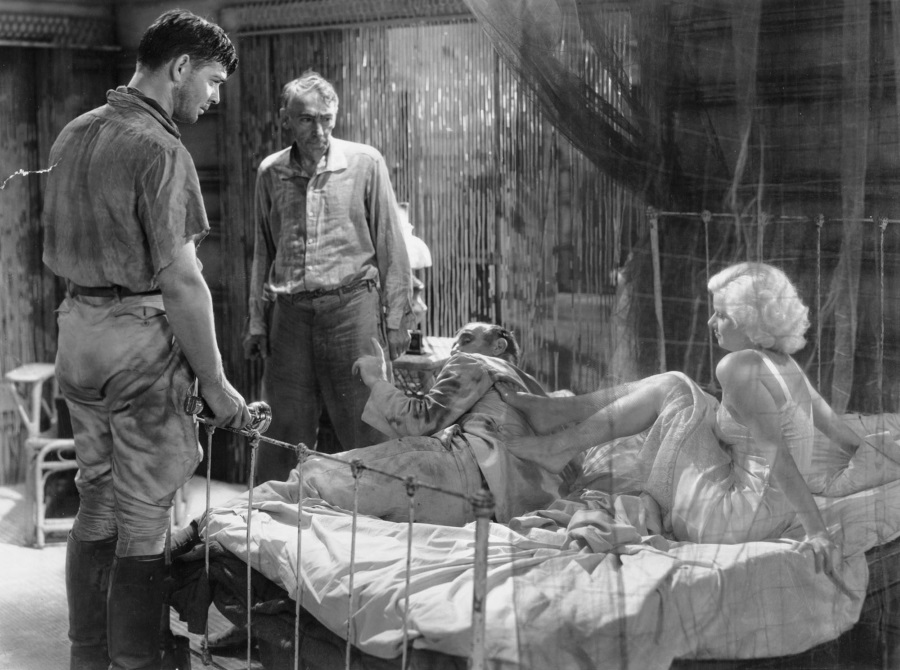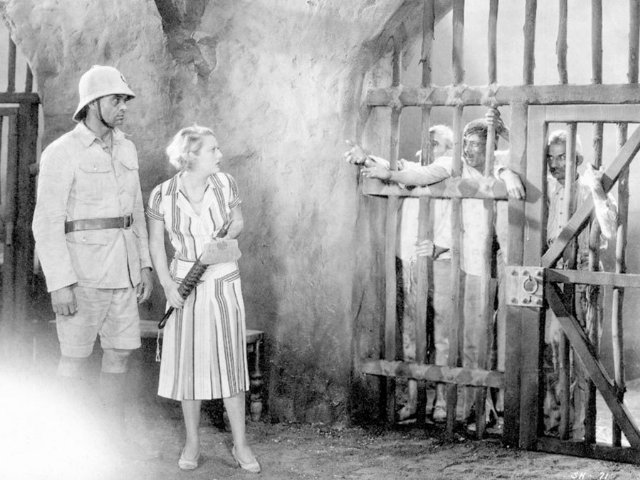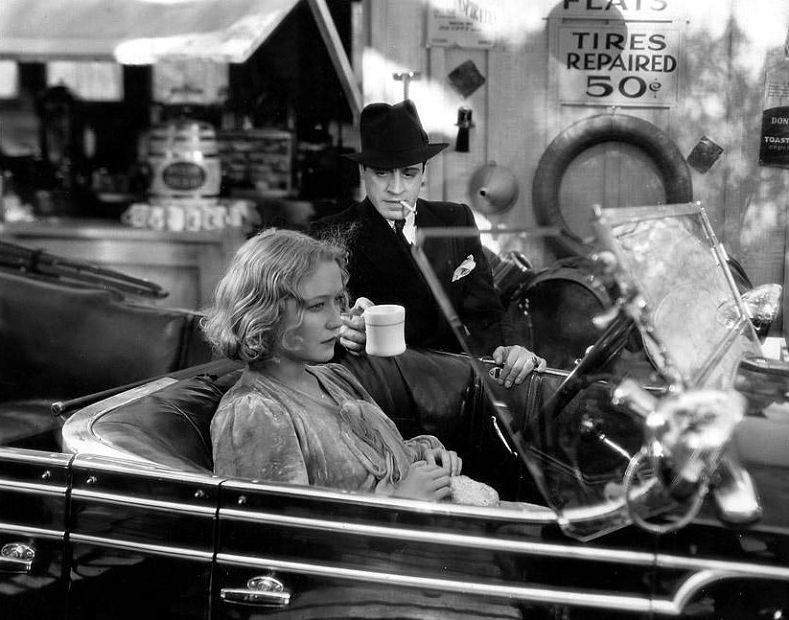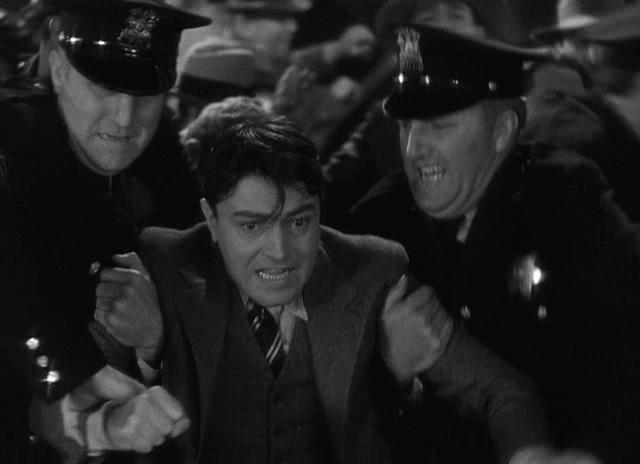Turner Classic Movies is turning all the Fridays in September over to films from that brief period in the early thirties when the studios thumbed their collective noses at the toothless Production Code and pushed the boundaries of sex, violence, and bad behavior without judgment or consequences in film after film. The iron boot of censorship came down in 1934 and stomped out all that deliciously salacious content, but for a few years Hollywood acknowledged and even flaunted sex between consenting adults (married or not). The films from this era were branded “Forbidden Hollywood” when they were rediscovered and revived for audiences in the 1990s, but today they are better known as Pre-Code. Turner Classic Movies has four full Fridays full of forbidden Pre-Code delights.
While there are gems aplenty throughout the month, I’ll spotlight a few of the most interesting and audacious rarities and lesser-known glories, including two from the coming Friday line-up.
Set those DVRs now!
Friday, September 5:
Safe in Hell (1931) – Think of this as a kind of B-movie riff on Sadie Thompson (the original bad girl in the tropics melodrama) directed with a merciless brutality by William Wellman. It stars the largely forgotten Dorothy Mackaill as a scuffed-up, street-smart answer to Miriam Hopkins and she is amazing as the hooker who is whisked off to a Caribbean island to flee a murder charge. The film’s title is no exaggeration; imagine Casablanca as a lice-infested backwater run by mercenary opportunists and filled with the sleaziest criminals to escape a manhunt. They all take their shot at seducing Mackaill, the sole white woman in this island prison, and she shoots them all down with the brash directness of an experienced urban doll who has spent her life fending off passes. Yet somehow the film manages to give them all a shot at redemption when she is tried for murder (it’s a different murder, and yet the same one, in the crazy logic of the melodrama contrivances) and they line up in her defense. Wellman it snappy and sassy as he winds the story from the cynical to the sentimental to the spiritual with equal commitment.
Wild Boys of the Road (1933), also from William Wellman, chronicles the plight of kids who became a homeless army riding the rails around the country during the depths of the Depression. As the film opens, they’re just fun-loving jazz-age teens with a junky jalopy, but anxiety of unemployment and poverty hangs over their home lives so they hit the rails to look for work, meet Sally (Dorothy Coonan, later Mrs. Wellman), who dresses as a boy to avoid predators, and find themselves driven out of every railyard, city, and shantytown they try to make home. What they endure is harrowing: rape, dismemberment, riots, starvation, and a world that would rather turn its back on the kids and send them along to the next stop. It’s a blast of anger and outrage and exasperation sprung from the immediacy of the Depression. Wellman doesn’t flinch from the ordeal, but for every predator is a sympathetic adult, even some of those on the other end of the fire hose that blasts their Hooverville Junior into splinters and sends the kids fleeing to the railcars, looking to the next stop for work, a meal, or just a place to rest.
Plus these glories:
Night Nurse (1931) and Baby Face (1933) – Barbara Stanwyck’s greatest pre-code firecrackers, the former with Clark Gable as a thug in a chauffeur’s uniform, the latter with Stanwyck sleeping her way up the ladder of success and into trouble.
Gold Diggers of 1933 (1933) – A silly little backstage musical with a sassy attitude and the desperation of the Depression behind every audition and rehearsal. And Ginger Rogers sings “We’re in the Money” in pig-latin!
Friday, September 12
The Story of Temple Drake (1933) – I’ve seen a lot of Pre-Code films but I have never seen a film that so blatantly drops its heroine into such physical, moral, and sexual degradation as this one. Bad girls go to hell in so many of these movies, but the badness of Temple Drake (Miriam Hopkins), the wild child granddaughter of a moralistic, judgmental old white-haired judge, isn’t cruel or criminal. This girl just wants to have fun, but she has the bad judgment to get into a car with a reckless, drunk society kid and the bad luck to break down at the hide-out of hillbilly bootleggers in partnership with a big city gangster, a sneering, savage thug accurately named Trigger (Jack La Rue). True to the genre, Miriam Hopkins strips off her wet gown to her skimpy silk skivvies, but this isn’t some salacious bit of cheesecake. She’s literally stripped of her defenses and at the mercy of men who take their turns leering and then fight over her like dogs over a piece of meat, safe until the fighting stops and the top dog goes in to take his spoils. It’s toned down from the source material, William Faulkner’s novel Sanctuary, but what remains is extreme even by the standards of the most adult pre-code movies and the reverberations are chilling: a state of shock comes over the once bubbly, lively Temple like a shadow of shame and pain. There’s really nothing else like this from the thirties.
This one is not on disc so try to catch it while you can.
Plus these glories:
Red Dust (1932) / Red-Headed Woman (1932) / Bombshell (1933) – Three with Jean Harlow. Bombshell is a showbiz satire as a snappy screwball comedy but Red Dust is one of the sexiest films of the Pre-Code era and she plays opposite Clark Gable. That’s a couple that sizzles on screen.
Trouble in Paradise (1932) / Design For Living (1933) – Two by Ernst Lubitsch, who could create the most erotic of relationships with nothing but wit and suggestion. Miriam Hopkins stars in both.
Freaks (1932) – Maybe not the greatest but certainly the weirdest of all Pre-Code horror movies.
Friday, September 19
Skyscraper Souls (1932) – Warren William was the silver fox of the Pre-Code era and in this film he plays a depression-era Gordon Gekko, a New York banker and corporate gambler whose financial empire is centered in his beloved 100-story skyscraper (a phallic tower of his power just two stories shy of the Empire State Building), where he also lives in a penthouse apartment. This big business tycoon is a shark at work and a wolf with the women, putting the moves on the youngest and prettiest girls around, notably Maureen O’Sullivan as the fresh young beauty he picks out of the secretarial pool to replace his longtime mistress. He juggles finances the same way he does women and isn’t above lying in either arena, which is why the bank examiners are looking into a dubious loan he made to himself to finance the building. Skyscraper Souls just oozes with lust and overflows with affairs, but the mercenary business dealings are just as audacious here, with William obsessed with building his own empire at any cost, even if it destroys lives around him.
If you like this (and what’s not to like?), check in next Friday for its companion piece Employees Entrance (1933) with Warren William as a department store magnate and Loretta Young as the object of his desire.
Plus these glories:
Blonde Venus (1932) – Marlene Dietrich plays the innocent who sells herself to for the men in her life and is judged for it. Josef von Sternberg makes even poverty and depravation look stunning.
I’m No Angel (1933) / She Done Him Wrong (1933) – Mae West brought a brazenness to female sexuality that no other Hollywood actress could touch and her motto, delivered in I’m No Angel, was: “When I good I’m very good, but when I’m bad, I’m better.”
Friday, September 26
Heroes For Sale (1933) opens in the mud and rain and gloom of soldiers in the trenched of World War I and ends in the mud and the rain with the tramp armies of America in the Depression. Tom Holmes (Richard Barthelmess) is almost back where he started fifteen years later, but the road in between is a nightmare worthy of Paul Muni in I Was a Fugitive From a Chain Gang. Tom is no fugitive, mind you. He’s a war hero whose glory got pinned to another. He’s a former POW with a morphine addiction that lands him in a sanitarium. He’s an idealistic inventor whose patent puts his colleagues and neighbors out of work. The schizophrenic tone twists as much as the plot – light comic relief is slammed by brute tragedy and no good deed goes unpunished – but Wellman’s gritty sensibility makes it simmer and his direction of a labor riot is harrowing. Yet for all the injustice and hypocrisy, the film is also filled with generous folks and honest people, all sorts of men and women just trying to get by in bad times and offering a hand out to those in need. The film ends on the grim march of homeless armies tramping the rails for work in the depths of the Depression, but after all of that, Tom is still optimistic and he sticks out his chin to walk on, just daring fate to take another poke at it.
Plus these glories:
Employees Entrance (1933), the perfect companion piece to last week’s Skyscraper Souls.
Little Caesar (1930) / The Public Enemy (1931) / Scarface (1932) – The original gangster trinity turned the bad guys into the most exciting anti-heroes of the movies and made stars of Edward G. Robinson, James Cagney, and Paul Muni.




